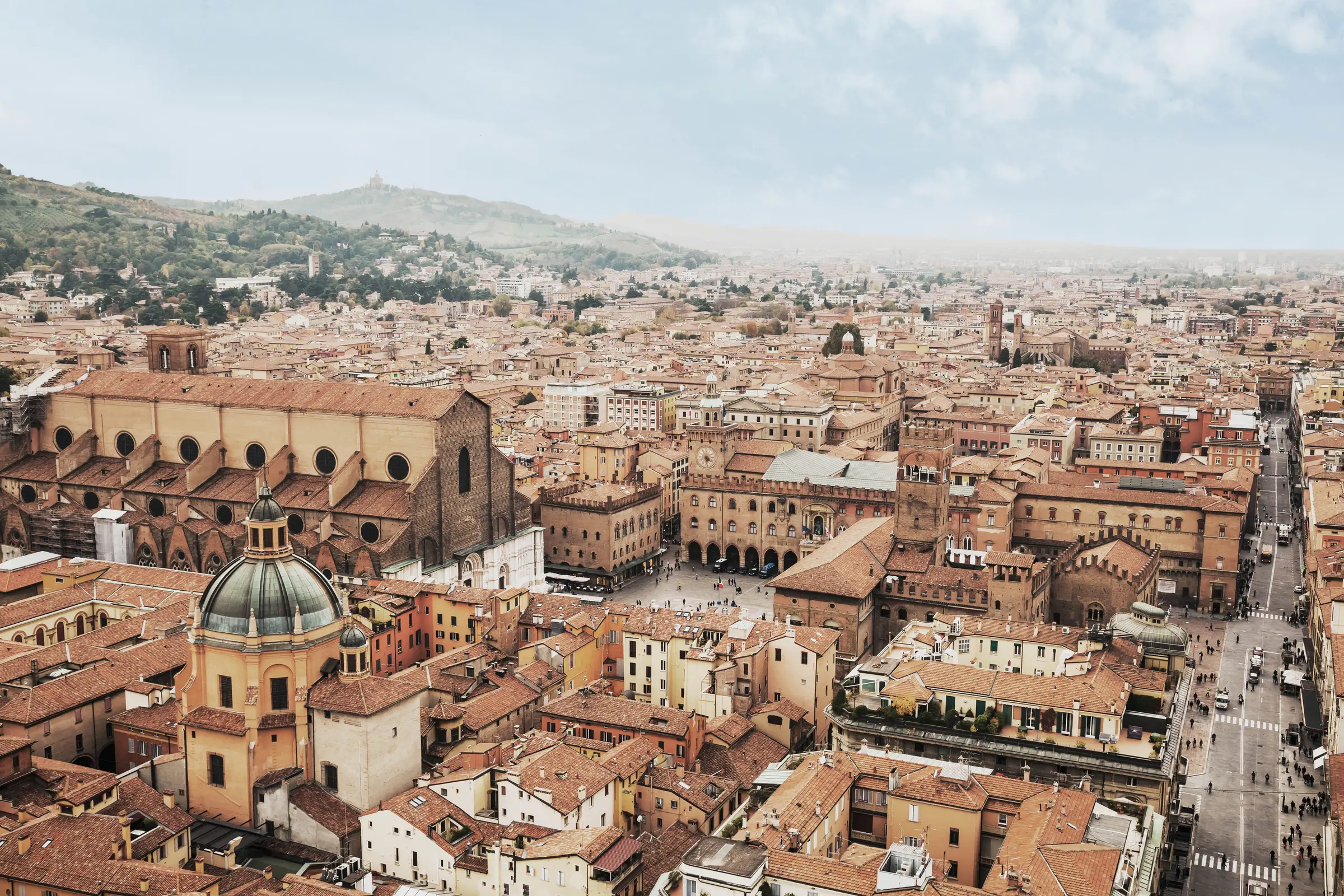Flights to Italy from $385
Travel relaxed and comfortably to Italy
Book your next flight to Italy on austrian.com and enjoy a stress-free travel experience from takeoff to landing. Explore many exciting destinations on austrian.com and choose the flight that perfectly matches your plans.
Whether you’re planning to discover several locations in Italy or prefer to focus on just one city, we’ll bring you to your destination with finest service and excellent amenities.
During your long-haul flight, our crew greets you with Austrian hospitality and serves a refined selection of culinary delights. Curious about what’s on the menu? Take a look at the digital menu before your trip and discover the dishes awaiting you. Entertainment is also taken care of: enjoy a wide choice of movies and series or explore international newspapers and magazines with our free eJournals.
Your mobile travel companion, the Austrian App, is available from booking through landing. Use it to check in easily with your smartphone, track your flight status, book additional flights, and always stay up to date. With our Miles & More program, you can also earn valuable miles and redeem them for attractive rewards and upgrades, making your future travel planning even more rewarding.
You can book a flight to Italy on austrian.com starting from $385.
Please note: To provide you with the widest possible selection of flight destinations, some of the direct flights or connecting flights on austrian.com are operated by our partner airlines, which may result in a different flight experience than with Austrian Airlines.
Flying to Italy: tips and information for your trip
The Italian "boot" is located on a peninsula in the South of Europe. It is a country rich in history and culture. Currently a member of the European Union, Italy is also part of the G-8, an organization consisting of the eight strongest economic countries in the world. Italy has many globally known cities, for example Milan, Venice, Turin, Florence, just to name a few. The capital is Rome, home of the Vatican, one of the most famous destinations in global travel. The total population of Italy is about 60 million, predominantly Roman Catholics. The country is known for its fantastic cuisine, and has exported many of its dishes, for example pizza and pasta, around the globe. You can Book your flight on austrian.com to numerous destinations throughout Italy.
Discover our destinations
FAQ
You can check in online as early as 47 hours before departure. To do so, have your booking reference or ticket number ready.
On short- and medium-haul flights, you can purchase a wide selection of snacks, sandwiches and drinks on board. On long-haul flights, you can enjoy the menu from DO & CO.
The general hand luggage dimensions are 55cm x 40cm x 23cm with a maximum weight of 8kg. If you fly economy or premium economy, one piece of hand luggage is allowed. In business class, you can take two pieces of hand luggage with you. More information on our hand luggage regulations can be found here.
Yes, you can thanks to Austrian FlyNet, our in-flight internet access. Currently, selected aircraft in our Airbus family are equipped with it, for short- and medium-haul flights . You can connect to the internet immediately after boarding and choose between different service packages once you have reached cruising altitude.
If there is a flight cancellation, we will book you onto another flight. Check under "My bookings" for all the information on your new flight. Our Austrian Chat Assistant Maria is available around the clock if you need her.
This is the baggage you can check in without incurring any extra charges. The dimensions, weight, and quantity permitted are based on your fare, the route booked, and your Miles & More status.
Premium Economy Class offers enhanced comfort, which is especially beneficial on long-distance flights. Experience perks like more spacious seating that reclines further than ever, ensuring a relaxing flight experience.
You can upgrade to Business Class online in "My Bookings." Click on "Upgrade flights" and our system will show you which of your flights can be upgraded. You can find all the details about how to do this here.
Business Class upgrade prices depend on your route, booking class and flight length. You can choose to book an upgrade at a fixed price or to submit a bid. You can learn more about all your options here.
Different time limits apply depending on which upgrade option you choose. You can submit an upgrade bid up to 60 hours before departure. An upgrade at a fixed price can be booked up to 48 hours before departure. You can upgrade during online check-in from 47 hours before departure. Counter or onboard upgrades are available on the day of travel. You can find more information here.
Yes, you can pay with miles for an upgrade at a fixed price and also for counter or onboard upgrades. You can also pay with miles when you upgrade during online check-in. However, you cannot pay with miles when submitting an upgrade bid.




